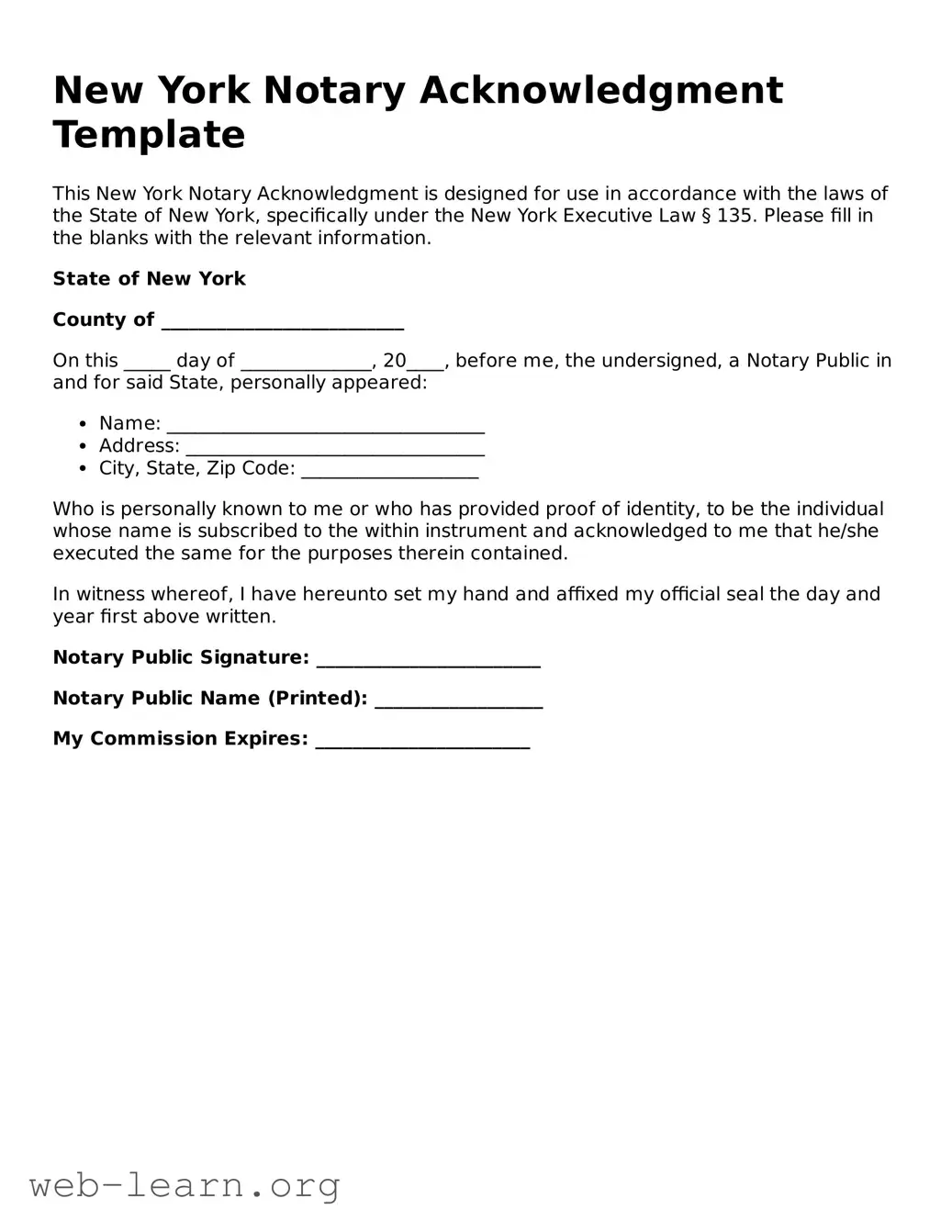New York Notary Acknowledgment Template
This New York Notary Acknowledgment is designed for use in accordance with the laws of the State of New York, specifically under the New York Executive Law § 135. Please fill in the blanks with the relevant information.
State of New York
County of __________________________
On this _____ day of ______________, 20____, before me, the undersigned, a Notary Public in and for said State, personally appeared:
- Name: __________________________________
- Address: ________________________________
- City, State, Zip Code: ___________________
Who is personally known to me or who has provided proof of identity, to be the individual whose name is subscribed to the within instrument and acknowledged to me that he/she executed the same for the purposes therein contained.
In witness whereof, I have hereunto set my hand and affixed my official seal the day and year first above written.
Notary Public Signature: ________________________
Notary Public Name (Printed): __________________
My Commission Expires: _______________________
